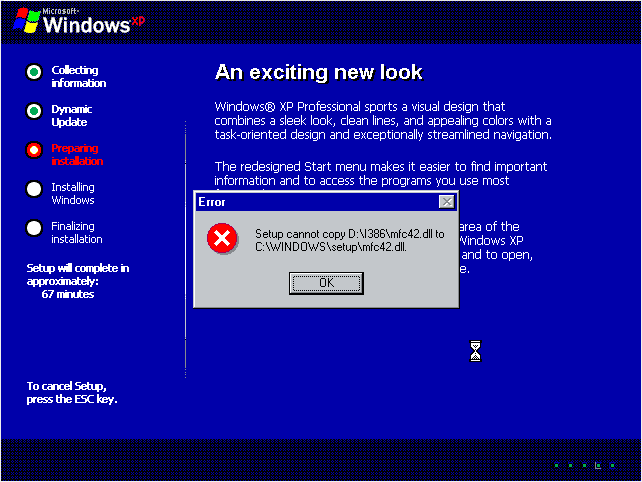The Ultimate Guide to Upgrading from Windows 98/ME to Windows XP

In the realm of operating systems, the transition from Windows 98/ME to Windows XP marked a significant leap forward in terms of stability, functionality, and user experience. Whether you’re seeking enhanced performance, expanded compatibility, or simply a more modern computing environment, upgrading to Windows XP can breathe new life into your computer. In this comprehensive guide, we’ll walk you through the step-by-step process of upgrading from Windows 98/ME to Windows XP, ensuring a seamless transition and maximizing the benefits of your new operating system.
Preparation:
Before embarking on the upgrade journey, it’s essential to make thorough preparations to ensure a smooth and successful transition. Here’s what you’ll need:
- A valid Windows XP installation CD with a valid product key.
- Backup of important data and files stored on your computer to prevent data loss during the upgrade process.
- Ensure your computer meets the minimum system requirements for running Windows XP, including processor speed, RAM, and available hard drive space.
- Check for compatibility of hardware devices and software applications with Windows XP to avoid compatibility issues post-upgrade.
- Download and install any necessary drivers and updates for your hardware components to ensure compatibility with Windows XP.
Step 1: Assessment of System Requirements
Before proceeding with the upgrade, it’s crucial to verify that your computer meets the minimum system requirements for Windows XP. These include a minimum processor speed, RAM, and available hard drive space. You can find detailed system requirements for Windows XP on the Microsoft website or in the documentation accompanying your Windows XP installation media.
Step 2: Backup of Important Data
To prevent the risk of data loss during the upgrade process, it’s essential to create a backup of all important data and files stored on your computer. This includes documents, photos, videos, music, and any other files you wish to preserve. You can use external storage devices such as USB flash drives, external hard drives, or cloud storage services to create backups of your data.
Step 3: Windows XP Compatibility Check
Before proceeding with the upgrade, it’s essential to verify the compatibility of your hardware devices and software applications with Windows XP. Some older hardware devices and software applications may not be compatible with Windows XP, leading to compatibility issues post-upgrade. Check the manufacturer’s website or documentation for information on compatibility with Windows XP.
Step 4: Windows XP Installation
Once you’ve completed the necessary preparations and verified compatibility, you’re ready to begin the upgrade process. Insert the Windows XP installation CD into your computer’s optical drive and restart your computer. Follow the on-screen instructions to boot from the Windows XP installation media.
Step 5: Upgrade Installation
Upon booting from the Windows XP installation media, you’ll be prompted to begin the upgrade installation process. Follow the on-screen instructions to proceed with the upgrade. You’ll need to enter your Windows XP product key during the installation process.
Step 6: Partition and File System Conversion
During the upgrade installation process, you’ll have the option to convert your existing file system to the NTFS file system, which offers improved security, reliability, and performance over the FAT32 file system used in Windows 98/ME. It’s recommended to choose the NTFS file system for optimal performance and compatibility with Windows XP.
Step 7: Driver Installation
After completing the upgrade installation process, Windows XP will automatically detect and install drivers for your hardware devices. However, it’s recommended to check for updated drivers for your hardware components on the manufacturer’s website and install them manually to ensure optimal performance and compatibility with Windows XP.
Step 8: Windows XP Activation
Once the upgrade installation is complete, you’ll need to activate Windows XP using the product key provided with your Windows XP installation media. Follow the on-screen instructions to activate Windows XP online or by phone.
Step 9: Post-Upgrade Configuration
After activating Windows XP, you can proceed with configuring your computer’s settings and preferences, such as display settings, network connections, and user accounts. You can also reinstall any software applications and restore your backed-up data and files to your computer.
Step 10: Enjoy Windows XP
Congratulations! You’ve successfully upgraded from Windows 98/ME to Windows XP, unlocking a world of enhanced performance, stability, and functionality. Take some time to explore the new features and improvements offered by Windows XP, and enjoy a more modern and efficient computing experience.
In conclusion, upgrading from Windows 98/ME to Windows XP is a straightforward process that can breathe new life into your computer and unlock a world of enhanced performance and functionality. By following this comprehensive guide and making thorough preparations, you can ensure a smooth and successful transition to Windows XP, maximizing the benefits of your new operating system. Embrace the future of computing with Windows XP and enjoy a more modern and efficient computing experience.




